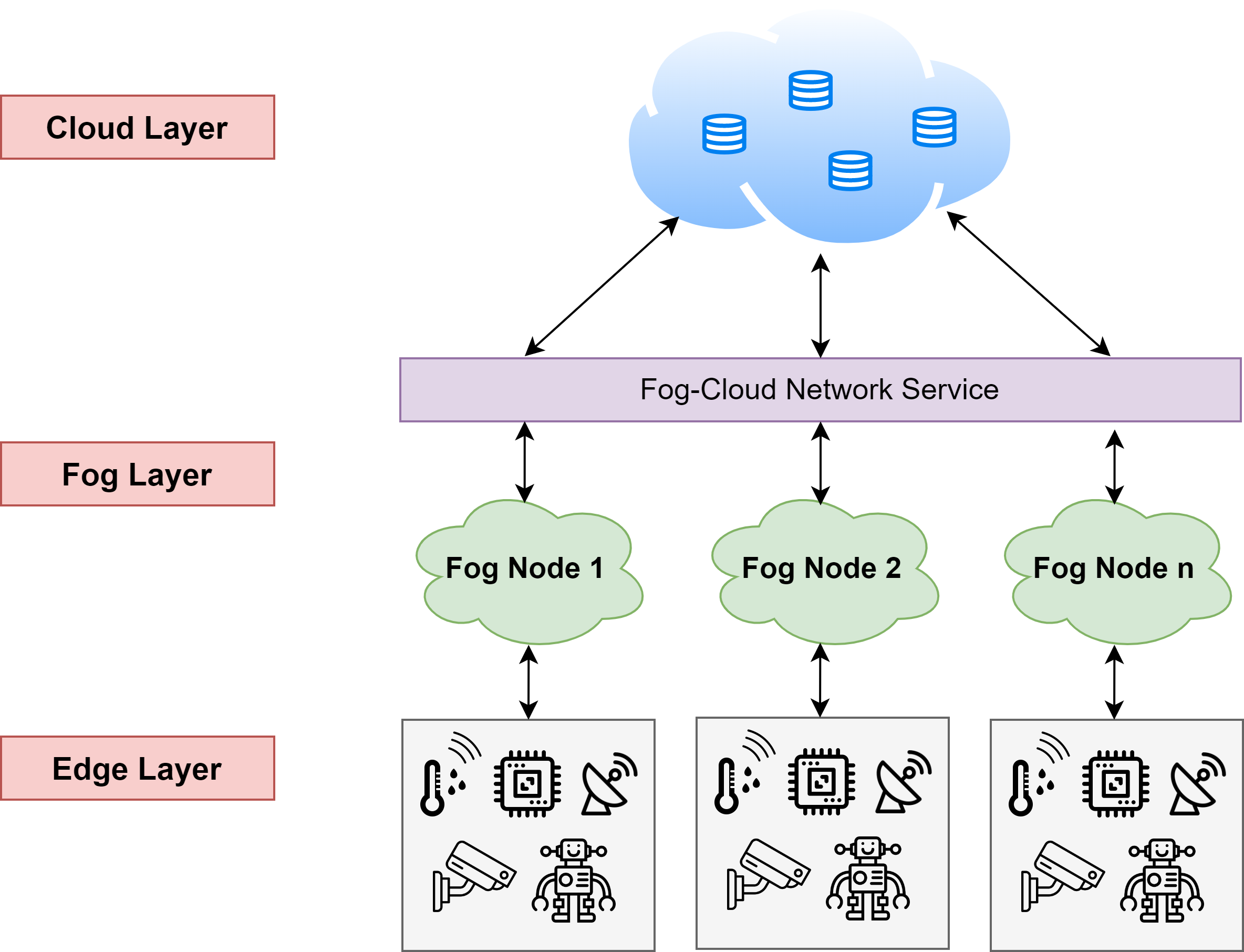Have you ever noticed that sometimes it takes a long time for your computer or phone to load a website or an app? That's because the data has to travel from your device to a faraway server, where it's processed and then sent back to your device.
What is Edge-Fog-Cloud?
Edge-Fog-Cloud Computing is a new way of processing data that helps to make this process faster and more efficient. It works by dividing up the computing work between different layers: the "edge" layer is the devices that are closest to you, like your phone or your smartwatch. The "fog" layer is made up of nearby computers or servers that can help with processing the data. And the "cloud" layer is a group of servers that are far away but have lots of power to process data.
By dividing up the work in this way, Edge-Fog-Cloud Computing can make apps and websites load faster because the data doesn't have to travel as far. It also makes it easier to process large amounts of data in real-time, which can be useful for things like self-driving cars or smart homes.
In brief, Edge-Fog-Cloud Computing is a new way of processing data that can make our devices faster and more efficient, and it's something that we'll likely see more of in the future!
How does Edge-Fog-Cloud Computing work?
To be more specific, Edge-Fog-Cloud Computing is a new paradigm in computing that has emerged in recent years. It is a distributed computing model that combines the strengths of three different computing models: Edge Computing, Fog Computing, and Cloud Computing. This approach is designed to help organizations better manage the increasing amounts of data generated by devices and systems while addressing issues such as latency, security, and privacy.
The goal of Edge-Fog-Cloud Computing is to provide a distributed computing architecture that can efficiently handle large-scale data processing and analysis. In this model, computing tasks are distributed across multiple layers, from edge devices to fog nodes to cloud servers. By combining the strengths of these three computing models, Edge-Fog-Cloud Computing provides a flexible, scalable, and cost-effective approach to computing that can help organizations achieve their business goals more efficiently.
In the next sections, we will explain each of the three components of Edge-Fog-Cloud Computing in more detail.
Edge-Fog-Cloud Architecture
1.Edge Computing:
Edge computing refers to the use of computing resources and services that are located closer to the end-user or device. This is in contrast to traditional cloud computing, where all computing is done in centralized data centers. With edge computing, processing is done on devices like smartphones, IoT devices, or network routers, which are located closer to the data source. This allows for faster processing and reduces the latency associated with sending data to a centralized cloud. Edge computing is particularly useful for applications that require real-time processing and analysis of data, such as in industrial IoT or autonomous vehicles.
2. Fog Computing:
Fog computing extends edge computing by creating a hierarchy of computing resources that provides more processing power and storage capacity. Fog nodes are intermediate points between edge devices and cloud servers that can provide additional processing and storage capabilities. These nodes can be located in nearby network equipment or at the edge of the network, closer to the end-user. Fog computing can help to reduce latency, improve security, and provide greater scalability and flexibility in computing resources.
3. Cloud Computing:
Cloud computing refers to the use of remote servers to store, manage, and process data. Cloud computing provides virtually limitless storage and computing resources that can be accessed from anywhere with an internet connection. Cloud servers are typically located in data centers that are far away from the end-user. Cloud computing is particularly useful for applications that require large-scale data processing and analysis, such as big data analytics or machine learning.
Conclusion
By combining these three computing models, Edge-Fog-Cloud Computing provides a distributed computing architecture that can efficiently handle large-scale data processing and analysis. In this model, computing tasks are distributed across multiple layers, from edge devices to fog nodes to cloud servers. This approach allows for faster processing of data, reduced latency, and improved reliability.
Overall, Edge-Fog-Cloud Computing provides a flexible, scalable, and cost-effective approach to computing that can help organizations achieve their business goals more efficiently.



